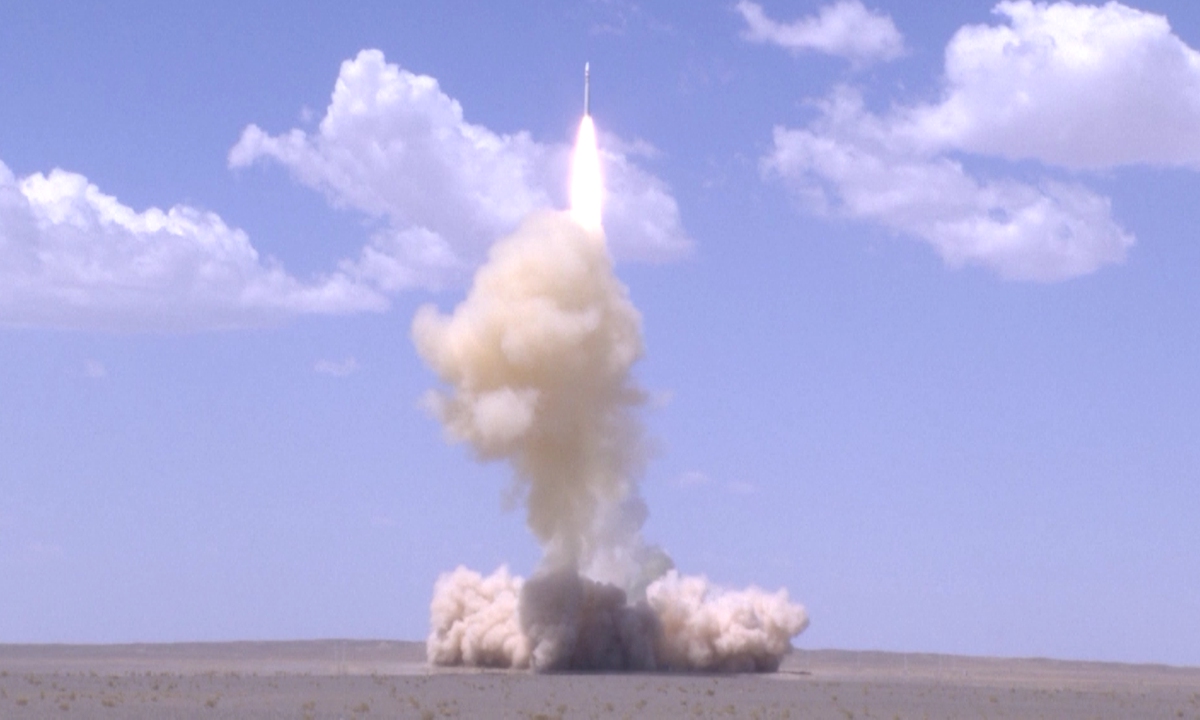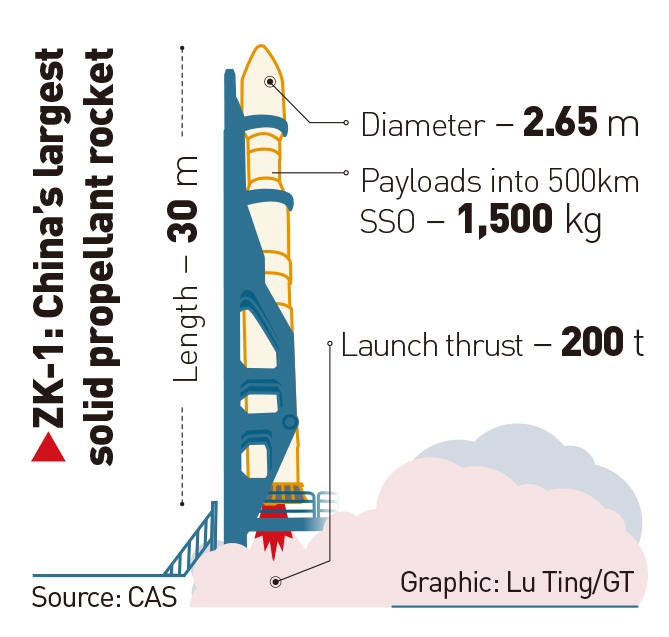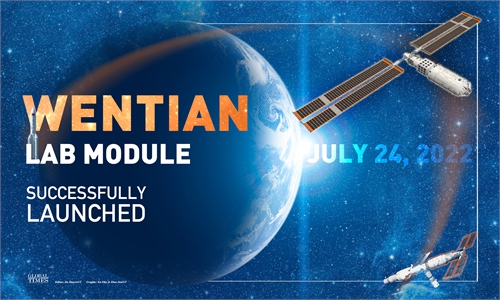China’s largest solid propellant rocket makes maiden flight, sending six satellites into orbit

China's Lijian-1 (ZK-1) solid propellant rocket makes its maiden flight from the Jiuquan Satellite Launch Center on July 27, 2022, successfully sending six satellites into their preset orbits. Photo: CFP
China's Lijian-1 (ZK-1) solid propellant rocket made its maiden flight from the Jiuquan Satellite Launch Center in Northwest China, successfully sending six satellites into their preset orbits. According to its developer, the Chinese Academy of Sciences (CAS), the 2.65-meter-diameter and 30-meter-long new rocket is the largest of its kind in China.
The successful maiden flight of the ZK-1, which is intended to primarily support launching missions for small to medium-sized satellite spaceflights, has not only provided more capacity options for launches using a solid rocket, but also brought the country's development of this type of rocket to a world-class level.
The CAS, in a statement it provided to the Global Times on Wednesday, said that what makes it a world-class solid rocket lies in multiple areas including its launch capacity, reliability and its cost efficiency for a launch mission.
The rocket is a four-stage launch vehicle and weighs 135 tons at launch with a thrust of 200 tons. A fairing of 2.65 meters in diameter was atop the rocket during the Wednesday launch. The ZK-1 is capable of sending payloads of 1,500 kilograms into 500-kilometer Sun-synchronous orbits (SSO), the CAS disclosed.

Graphic:GT
The six satellites sent into orbit during the ZK-1's maiden flight included a new space technology experiment satellite, an orbital atmosphere density surveying experiment satellite and a low-orbit quantum key distribution experiment satellite, according to a press release issued by the Jiuquan Satellite Launch Center on Wednesday.
The ZK-1 is the latest member of China's solid propellant family that includes the Long March-11, which can be launched from land or sea, and the Kuaizhou-1.
China has also developed the Smart Dragon-3, a solid rocket that is tasked to meet market needs in the domain of commercial space launches. It has a body diameter of up to 2.64 meters with a mass at launch of 140 tons, and it is capable of sending a payload of 1.5 tons into SSO.
The Smart Dragon-3 rocket is expected to conduct three launches including its maiden one within 2022.
The Academy of Aerospace Solid Propulsion Technology, which belongs to the China Aerospace Science and Technology Corp (CASC), developed and carried out a successful running test of a new huge solid rocket motor with a diameter of 3.5 meters and a remarkable thrust of 500 tons in 2021. The CASC has stated that it is the most powerful solid rocket motor with the largest thrust in the world so far.
The rocket motor is expected to be used with heavy-lift rockets to meet various demands for launch vehicles during space missions like crewed landings on the moon and deep space exploration, the CASC said.
For the unique advantage of a shorter preparation period before launches and therefore a faster response capability and lower cost for launches, increasingly more attention is being paid to solid rocket development around the world.
The US and Europe are among the most competitive players in the race for solid rocket development. The US has its Minotaur rocket family that uses 2.34-meter motors from decommissioned Peacekeeper ICBMs, and Europe has recently successfully launched for the first time the Vega Consolidation or the Vega C solid rocket, which uses a 3.4-meter-diameter P120 motor that is capable of providing a thrust of more than 470 tons.


